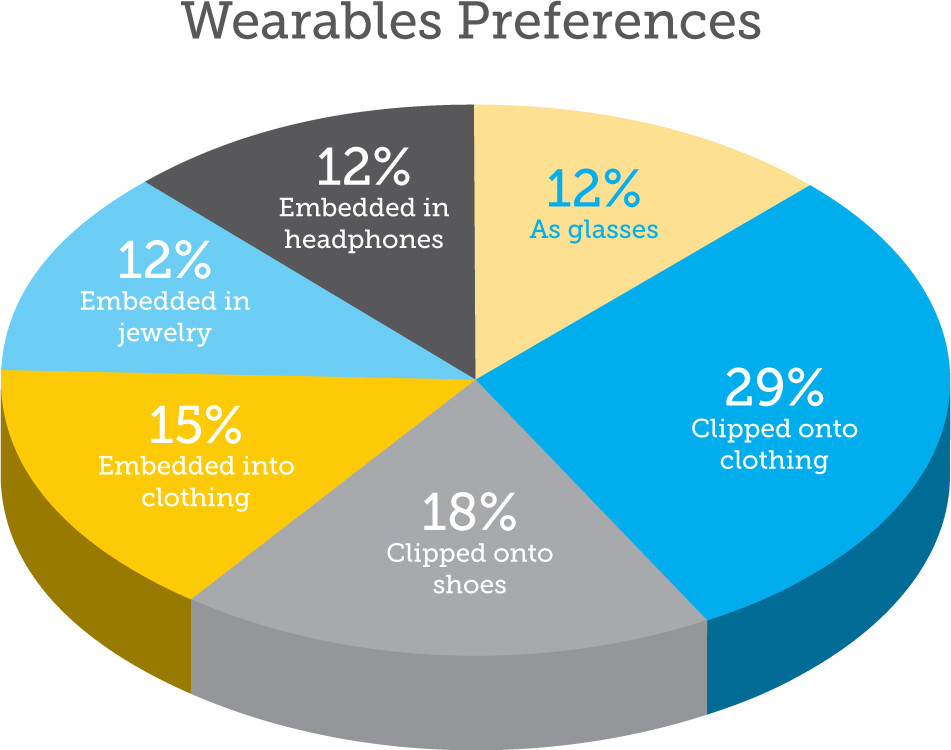Understand the future of wearable devices
August 18, 2015

According to analyst IHS, by 2019, the wearables market is estimated to reach more than230 million units, comprised of various devices promising alway...
According to analyst IHS, by 2019, the wearables market is estimated to reach more than230 million units, comprised of various devices promising always-on health monitoring, leisure connectivity, environment automation, and a broad range of security functions. These features will place a huge demand on hardware and software design, including increased battery life, smaller size, ease and speed of charging, digital encryption and security, and the sophistication of sensor and communication technologies.
The trend to incorporate more sensors into wearable devices will accelerate in the coming years, giving us not only a wider spread of information about the world around us but also making it possible to understand higher-level patterns in our activities and helping us to make better lifestyle choices. As new products enter the market, and different approaches to wearables are trialed, we’ll see our accessories increasingly interacting with other smart devices from wristbands, clothing accessories, jewelry, headphones, and glasses incorporating miniaturized technology. Leading semiconductor manufacturers are already shrinking their devices and developing single-chip integrated solutions that combine power management with sensor interfaces, processing, security, and communications.

Figure 1. Wearables are likely to develop in various shapes and sizes, not just wrist bands and watches.
With the power of constant medical monitoring must come the control to manage that sensitive information. If we’re measuring and transmitting personal bio-information to our smartphones – and potentially to and from our medical healthcare providers – we must be confident that the encryption can prevent our privacy and confidentiality from being compromised. While Bluetooth Smart contains some simple encryption methods, some system suppliers can now provide banking-level encryption at both ends of their communication channels, ensuring that you only share what you want to share, even if your device is hacked.
One of the greatest motivators for customers purchasing battery-operated devices is battery life, and satisfying this demand remains a formidable challenge to wearable designers that are cramming their devices with more components and functionality. To compensate for the demands of a limited power budget, some manufacturers are creating very low-power integrated solutions, drawing as little as 1 mA for Bluetooth Smart events. Others are molding layered lithium-polymer batteries to fit device forms, maximizing the power storage space available.
Today’s wearables typically manage between 7 and 14 days of operation before a night’s charge, but the next generation could require much more than that with the possibility of an "always-on" mode, allowing round-the-clock operation that would not require the user to remove or switch off the device.
Charging technology might provide an alternative solution to current battery life limitations. Today, some wearables incorporate solar or kinetic charging mechanisms, although these aren’t sufficient for everlasting, uninterrupted operation, merely lengthening battery life. Some researchers are looking at other harvesting technologies, such as absorbing the energy from stray RF signals. The most probable solution is likely to be wireless charging, where the wearable will absorb energy from dedicated, loosely-coupled RF transmitters distributed nearby, typically within about 10 m. To be successful, the technology will need to follow a similar pattern to Wi-Fi, with cafes, airports, hotels, and offices all maintaining charging hotspots that can supply the power we need on-the-go.

Figure 2. Loosely coupled wireless charging could support the development of wearables you never need to remove.
Sensors require a whole new generation of analytical and wireless communications technology – both hardware and software – that can make sense of the information they’re receiving, and send us human-level indicators of the behaviors and environments they’re detecting. The potential for applications is almost endless, from remote medical check-ups and dietary hints to home automation, security and day-to-day convenience. Ultimately, it’s these services, and the physical and operational forms they take, that will attract people to invest in wearables and open up the market for further development.
Mark joined Dialog Semiconductor in 2007. Previously, he was a design engineer at Phillips Electronics and held research and teaching posts at McGill University, where he gained his Masters degree in Microelectronics. He has also studied strategic marketing at the Harvard Business School. In his spare time Mark enjoys getting out on his bike, self-tracking his progress using the latest app-enabled Bluetooth accessory.





